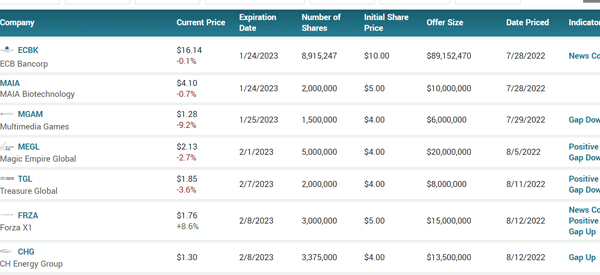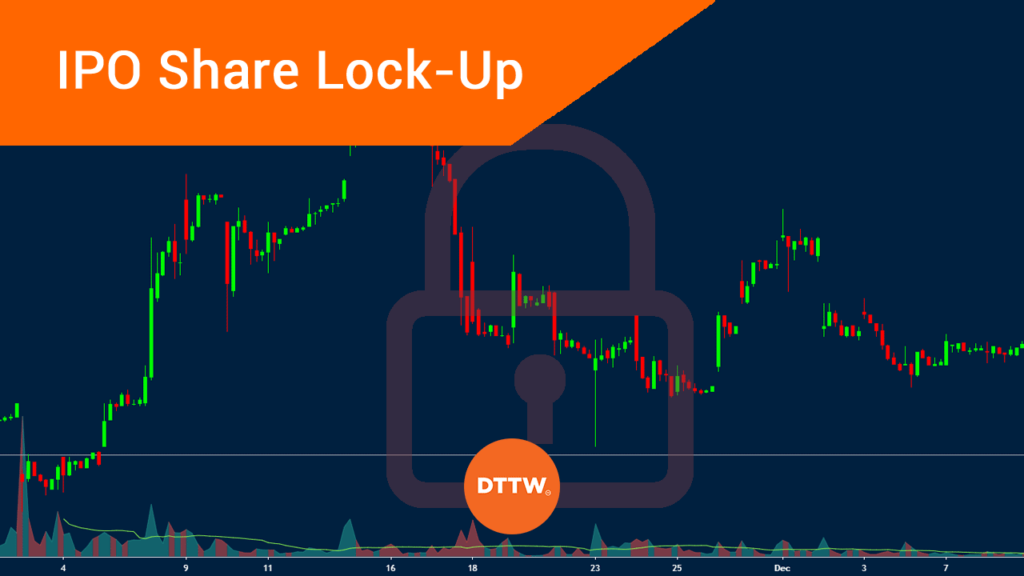Initial Public Offerings (IPO) refer to a period when a company moves from being a private entity into a public one. This happens when a company sells its stake to the public and is then listed in an exchange.
In the United States, companies are mostly listed in exchanges like the Nasdaq and New York Stock Exchange (NYSE).
In this article, we will look at an aspect of IPOs known as a lock up period.
What is an IPO?
Companies use different methods of raising money to fund growth and other projects. Two of the most popular approaches are debt and equity.
Debt is the process where companies raise money from a bank and pay it back through instalments. The lender usually benefits from the interest they receive from the borrower. The company, in its part, benefits from the fact that it does not sell its stake to the lender.
Equity, on the other hand, is an approach where the company sells a stake in its business to external investors. This can be done either in the public market or in the private market. The latter is popular in the venture capital industry, which has helped power firms like Facebook and Alphabet to be the juggernauts they are today.
How investors can take profits
When investors put their money to a private firm, their goal is to exit at a profit. To do this, they can sell their stake to other private investors. Alternatively, they can exit once the company goes through an Initial Public Offering (IPO).
An IPO is a process where a private company sells its stake to the public. After an IPO, the shares can be bought and sold by any investor or trader in the market. It is a process in which companies like Apple, Microsoft, and Intel are traded today.
What is an IPO Lock-up period?
Before a company goes public, the shares are usually owned by several key people. They include the founders of the firm, the pre-IPO investors like venture capital firms, and its employees.
An IPO lock-up period is a period where a company’s insiders are restricted from selling their shares in the public market. This period is usually about 90 days and 180 days after the IPO.
The main purposes
A lock-up period has two main purposes. First, it prevents the insiders from flooding the market with shares, which could push the stock price lower. In most cases, the stock will drop when there’s a lot of supply of shares than the overall demand.
Second, a lock-up period prevents insiders from rushing out of the market early enough. For one, if the insiders don’t believe in the firm’s future, an IPO provides them with an excellent opportunity to exit their investments. Therefore, a lock-up period is a way of protecting retail investors.
Therefore, a lock-up period is an excellent period for traders because of the amount of volatility it is associated with.
Related » How to Trade in Periods of High Volatility
Why IPO lock up happens and how long it lasts
As mentioned above, a lockup period is an important part of the financial market. It happens for two main reasons. First, it is to prevent insiders from selling the shares and leave the public holding the bag. Second, it aims to protect original investors from increased selling of the stock.
For example, since insiders hold most of the stock, it means that if they were to sell in bulk, the shares would plunge.
The lockup period happens in the first 90 to 180 days when the company goes public. Most companies set the period at 90 days.
The difference in timing is because the lockup period is usually not mandated by the Securities and Exchange Commission (SEC). Instead, it is usually set by the company using conventional methods. In other times, the lockup period is mandated by the investment bank.
How to identify upcoming IPO Lock-up periods
The secret for trading IPO Lock-ups is to identify when they are happening. In the past, knowing when the IPO Lock-up is coming up was extremely difficult, especially for retail traders. That’s because most of these tools were premium and only available to professional traders.
Today, this has changed because of the vast number of free resources that tell you when the lock-up period is coming up.
Investing.com is one of the best free resources that has a lock-up expiry calendar. Other excellent resources are Yahoo Finance and Webull.com.
The chart below shows some of the companies whose lockup period is about to happen.

How to trade IPO Lock-up periods
There is no well-defined strategy to trade an IPO lock-up expiration. However, you can follow several strategies to make money and avoid mistakes when trading during this period.
First, as mentioned above, you should know when the expiration period is about to come. You can use the sites we mentioned above to get this information.
Second, you need to look at the overall chart patterns to identify potential entry and exit points. Ideally, in most periods, it is usually not advisable to buy a firm that is heading towards an expiration. That’s because, the general thinking in the market is that shares tend to drop after the expiration period.
What happens to shares when the lockup period ends?
A common question is what happens to stocks when the lock-up period ends. In most cases, nothing really happens. Many insiders still continue holding the stock. In other periods, we usually see stock prices drop as insiders exit their positions.
This usually happens when they believe that the shares will continue falling. Alternatively, it usually happens when they need the funds to allocate to other investments.
How to identify entry points
There are several strategies you can use to identify potential entry points. Some of the tools you can use to identify these levels are indicators like VWAP, moving averages, and the Relative Strength Index.
Further, you can use tools like the Fibonacci retracement and Pitchfork to identify levels to buy and sell the shares.
Still, there are other unwritten rules when trading lock-ups!
Unwritten Rules
First, if the stock is extremely lower than the IPO price, there’s a possibility that there will be no major movement. That’s because, in this situation, many insiders may not be ready to sell at a stop loss.
Second, if the shares have surged after the IPO, there’s a possibility that the stock will drop as insiders take profits. Also, some of them will sell their shares with the goal of buying them at a lower price.
› Why some companies prefer Reverse Merger to an IPO?
Summary
An IPO lock-up is a period where insiders are given a chance to sell their shares a few months after the stock goes public. It allows additional shares to come to the market, which increases volatility.
In this article, we have looked at why it happens and some of the strategies you can use to trade it.
External useful resources
- Why Is There an IPO Lock-Up Period and How Long Does It Last? – Investopedia
